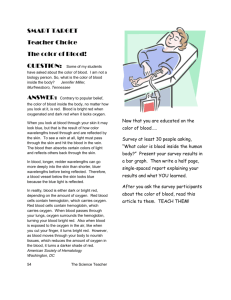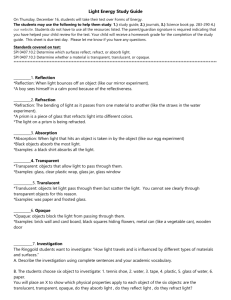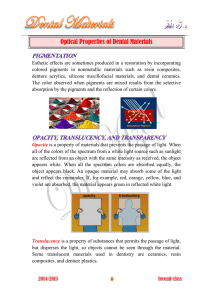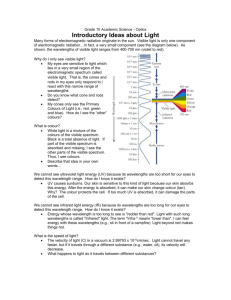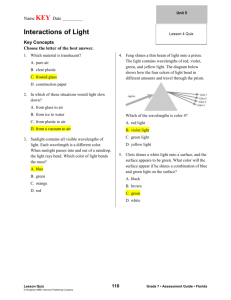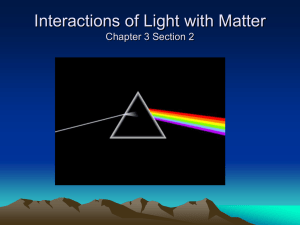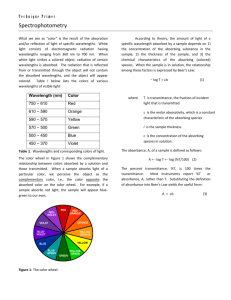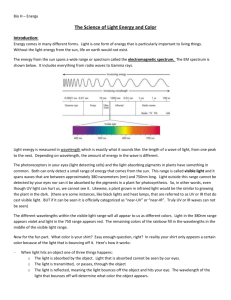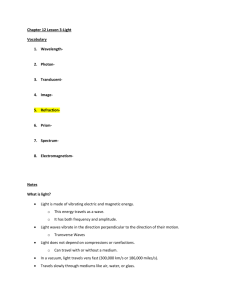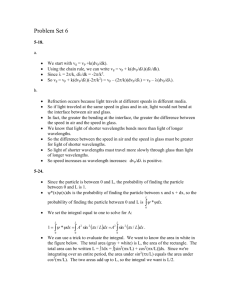Lesson 5 Light and Color
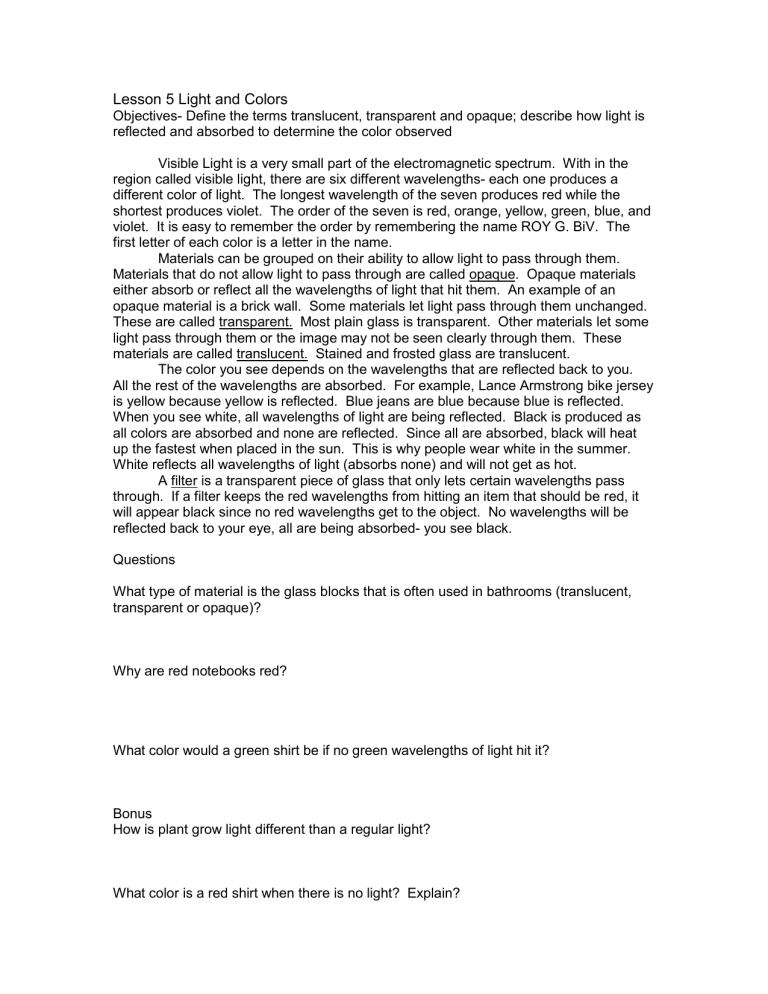
Lesson 5 Light and Colors
Objectives- Define the terms translucent, transparent and opaque; describe how light is reflected and absorbed to determine the color observed
Visible Light is a very small part of the electromagnetic spectrum. With in the region called visible light, there are six different wavelengths- each one produces a different color of light. The longest wavelength of the seven produces red while the shortest produces violet. The order of the seven is red, orange, yellow, green, blue, and violet. It is easy to remember the order by remembering the name ROY G. BiV. The first letter of each color is a letter in the name.
Materials can be grouped on their ability to allow light to pass through them.
Materials that do not allow light to pass through are called opaque. Opaque materials either absorb or reflect all the wavelengths of light that hit them. An example of an opaque material is a brick wall. Some materials let light pass through them unchanged.
These are called transparent. Most plain glass is transparent. Other materials let some light pass through them or the image may not be seen clearly through them. These materials are called translucent. Stained and frosted glass are translucent.
The color you see depends on the wavelengths that are reflected back to you.
All the rest of the wavelengths are absorbed. For example, Lance Armstrong bike jersey is yellow because yellow is reflected. Blue jeans are blue because blue is reflected.
When you see white, all wavelengths of light are being reflected. Black is produced as all colors are absorbed and none are reflected. Since all are absorbed, black will heat up the fastest when placed in the sun. This is why people wear white in the summer.
White reflects all wavelengths of light (absorbs none) and will not get as hot.
A filter is a transparent piece of glass that only lets certain wavelengths pass through. If a filter keeps the red wavelengths from hitting an item that should be red, it will appear black since no red wavelengths get to the object. No wavelengths will be reflected back to your eye, all are being absorbed- you see black.
Questions
What type of material is the glass blocks that is often used in bathrooms (translucent, transparent or opaque)?
Why are red notebooks red?
What color would a green shirt be if no green wavelengths of light hit it?
Bonus
How is plant grow light different than a regular light?
What color is a red shirt when there is no light? Explain?

